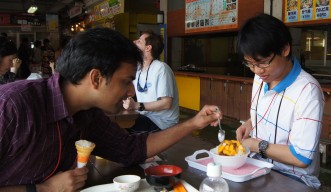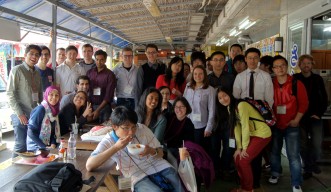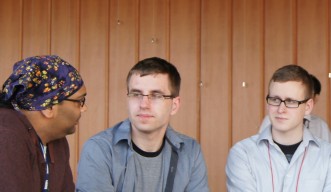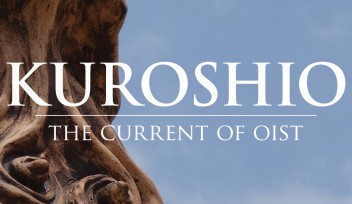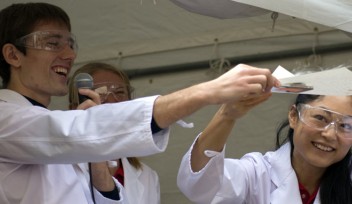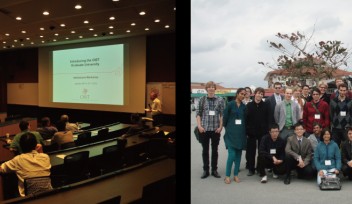Selecting OIST’s Next Scholars
Starting a PhD program on a remote island with a newly established graduate university can sound daunting. But many PhD candidates from the Admissions Workshop that took place on February 26-28 sounded anything but daunted. “If I wasn’t sold on it before, I am now!” said Canadian Alexandre Geut-McCreight.
From the nearly 200 applicants for OIST’s 2013 PhD program, OIST chose 42 to fly to Okinawa to participate in three days of campus orientation, a writing exercise, academic interviews, and an introduction to life around Onna-son. The Graduate School’s unusual admission approach helps the university gauge how the students would fit into OIST. “Most importantly we want to see what their attitude is toward doing great research,” said Harry Wilson, manager of Academic Services. “It’s really a small investment for the caliber of students OIST wants,” said Wilson. The students, in turn, form a better image of OIST than from a cyber visit, to see how they will be investing five years of their life.
Sixty percent of the incumbents already have a Masters degree. They arrived from all over the world-- Thailand, Canada, Russia, Cameroon and Fiji for example, comprising 22 different nationalities. Three candidates are already from OIST: Anant Jain, Sandrine Burriel-Hà, and Ananthanarayanan Kumar. OIST was the first to respond from 12 universities that Jain applied to. Though he works in the Computational Neuroscience Unit led by Prof. De Schutter Unit, the lab tours were helpful for him. “I didn’t know much about the other units, and was surprised to find how passionate the scientists were.”
Provost Robert Baughman and Dean Jeff Wickens led tours throughout the campus and to several of the research units on the first day of the workshop. The following day involved intense one-on-one interviews with at least five of the professors, some of whom were unrelated to the student’s field. Interviews spilled into the third day, after which the group and some professors visited the local farmers market, Onna no Ekki to sample the local cuisine. From there they traveled to a local supermarket, and then to the cliffs along Cape Manzomo for a glimpse of the student life awaiting them.
A few of the candidates had only applied to OIST. One was Emily Crotteau, an American who decided to apply a year early since OIST embodied the truly interdisciplinary program that she sought. Furthermore, she liked starting near the onset of OIST’s graduate program. “Where else can you set the tone for student culture in a competitive PhD program?”
Kazakhstanian Irina Reshodko studied at Moscow State University where it was challenging to get time with busy professors, she said. With no undergraduates at OIST, she was pleased that OIST professors were accessible so much as to eat lunch with them. The concept of lab rotations excited her most. “We can try things out before we devote our lives to it.”
A committee will soon convene to make the difficult choice of which of these excellent students to admit for the start of the 2013 academic year.
For press enquiries, please contact media@oist.jp










